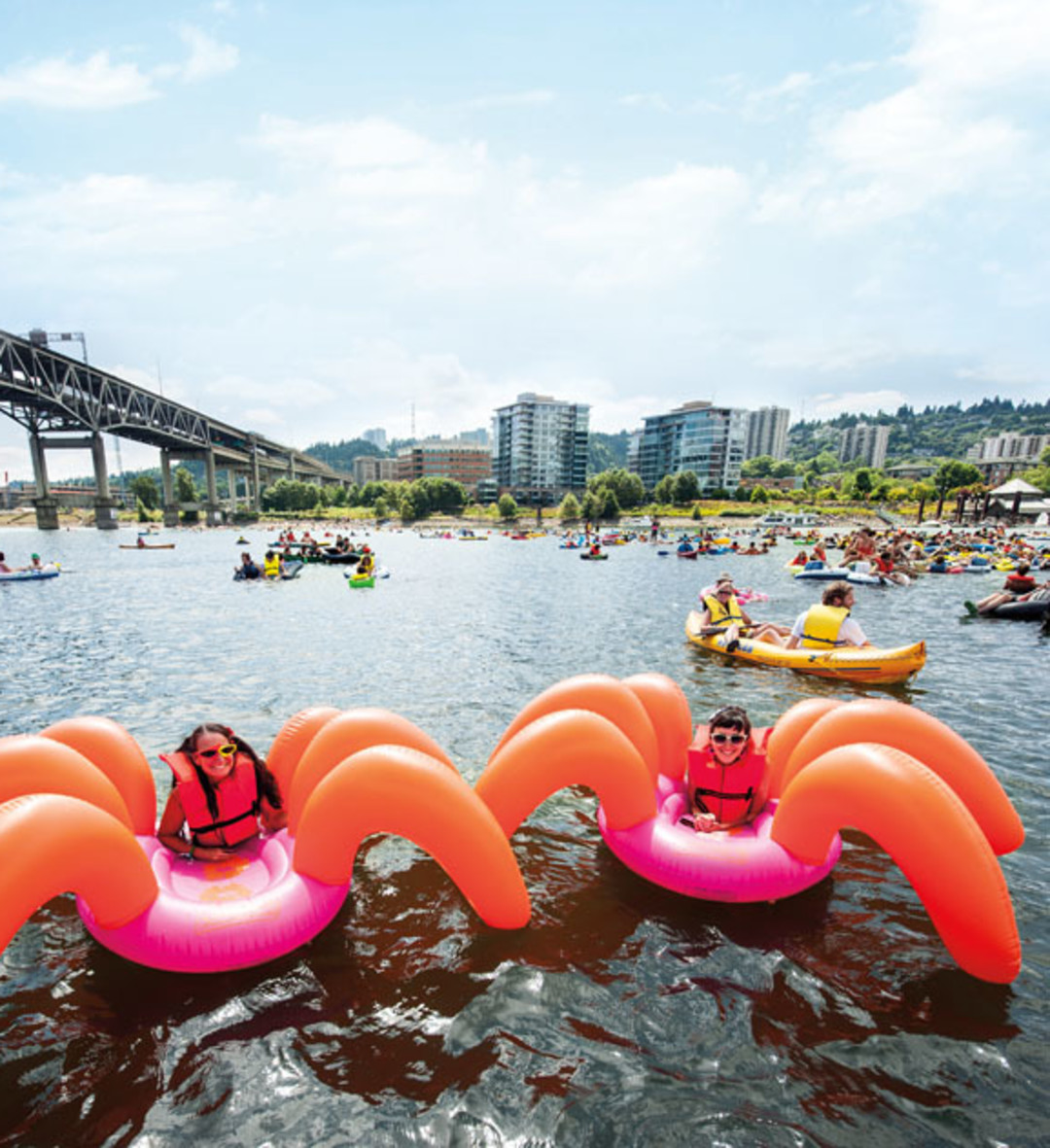Would You Swim in the Willamette? Prove it.

Image: Courtesy Mark Gamba
1907: The Oregon Board of Public Health calls the Willamette River “an open sewer.”
The 1930s: Thanks to decades of use by treatment plants and paper mills, the Willamette is almost biologically dead.
The 1960s :Major cleanup efforts begin—spurred in part by future governor Tom McCall’s 1962 TV news documentary Pollution in Paradise.
1972: National Geographic declares the river “safe to swim in.” Nobody buys it.
2011: “The Big Pipe,” a $1.4 billion sanitation infrastructure project, wraps up, largely ending discharge of raw sewage into the river. So that’s nice!
July 27, 2014: The fourth installment of the Big Float will lure hundreds of swimmers—and their eccentric flotation devices—to the east-side beach beneath the Marquam Bridge. The mob will doggy-paddle a quarter mile to Tom McCall Bowl on the river’s western bank. The one-day splashdown celebrates (and pushes) the Human Access Project’s efforts to encourage swimming in the river and build public beaches along its urban course. (HAP is currently working on three beach construction projects.)
“The Big Float challenges us to consider what it means to live in a green city,” says cofounder Will Levenson. “Portland could be transformed by the realization of its recreation potential.”
Still unsure? Federal monitoring stations reveal the Willamette is on par, or even in a commanding lead, compared to the pH levels, turbidity, and dissolved oxygen content of the picturesque North Umpqua River. So suit up!




